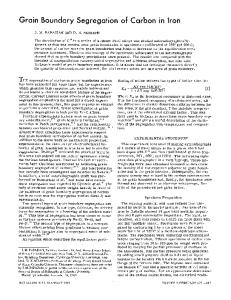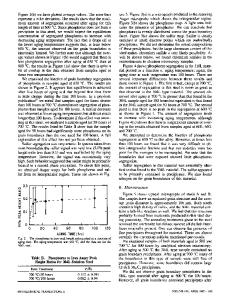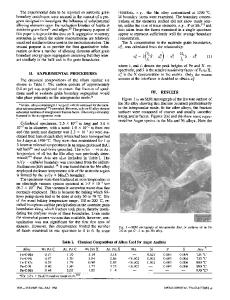Grain Boundary Segregation of Rare-Earth Elements in Magnesium Alloys
- PDF / 1,558,349 Bytes
- 9 Pages / 593.972 x 792 pts Page_size
- 111 Downloads / 423 Views
ION
A key limitation of current wrought magnesium alloy sheet is poor cold formability.[1] It has been demonstrated that the strong basal textures that characterize conventional magnesium alloy sheets is a major contributing factor to this poor formability.[2,3] Small additions of rare-earth (RE) elements have been shown to modify the texture of magnesium sheet after hot rolling, producing weaker texture and an increased split in basal pole orientations. Sheets produced from alloys with these modified textures show significantly improved formability compared to conventional magnesium alloy sheets with a strong basal texture.[2] It is now known that the amount of RE needed to activate texture change can be very small.[2–5] For example, for low-solubility REs such as Ce, only 0.03 at. pct addition is required to produce a strong texture weakening effect.[3] This observation has led to the suggestion that segregation is likely to be important in enabling much higher concentrations to be achieved locally at sites such as grain boundaries and dislocations.[6–9] The critical RE concentration required to change the texture has been observed to vary directly with the solubility of the element, i.e., for elements with a higher solubility, more RE is needed.[10] However, it has been concluded that this transition is not associated with JOSEPH D. ROBSON, Professor, SARAH J. HAIGH, Reader, and DAVID GRIFFITHS, Research Student, are with the School of Materials, University of Manchester, MSS Tower, Manchester M13 9PL, UK. Contact e-mail: [email protected] BRUCE DAVIS, Research Manager, is with Magnesium Elektron North America, 1001 College St., P.O. Box 258, Madison, IL 62060. Manuscript submitted April 23, 2015. Article published online October 19, 2015 522—VOLUME 47A, JANUARY 2016
precipitation, since the critical RE concentration required to produce the texture weakening effect is below the solid solubility.[5,10] A detailed description of the RE texture weakening effect and proposed mechanisms are reviewed elsewhere.[11] One important factor that has been widely reported is an effect of RE additions in suppressing dynamic recrystallization (DRX). This appears to be critical in enabling a deformed structure to be obtained containing a wider spread of orientations, deformation heterogeneities, and higher stored energy.[5] When these structures recrystallize, a weaker texture is obtained. Segregation of RE to grain boundaries would be expected to provide a strong drag force suppressing DRX. The predictions of simple classical models for boundary segregation and solute drag support this hypothesis.[12] There is now direct experimental evidence that RE elements can segregate strongly to grain boundaries. These data have been obtained using both atom probe[6] and high-resolution transmission electron microscopy (HRTEM).[7–9] A recent investigation[8] of two Mg-Gd alloys using high-angle annular dark-field (HAADF) scanning transmission electron microscope (STEM) imaging has revealed that the RE atoms can segregate into small
Data Loading...











